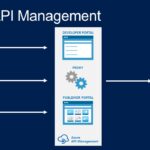With the demand for SaaS applications growing exponentially, many people are interested in how to develop a successful SaaS application.
Developing a SaaS application needs a spark. First, identify a problem, understand people’s needs, and begin building a solution for the problem.
But developing a SaaS application and launching it into the market must meet some guidelines. Here in this article, we have developed a simple step-by-step guide on creating and launching a SaaS application. Now let’s learn the process.
Steps To Develop A SaaS Application:
Step 1: Determine your audience and solve a problem for them
If you want the long-term success of your product, you must determine your users and how they will benefit from your SaaS product.
First, dig deep, learn about different users, and narrow your target audience. It is crucial to ensure that your users are willing to pay for your problem, i.e., the product you develop. You can do market research and prototyping before developing the product. Don’t skip this step, as it will save your time and effort.
Step 2: Study your competitors
After narrowing down your audience, it is essential to study your competitors. Research and learn the different ways by which others are approaching solutions to a problem.
It is also crucial to determine if your product is worth or attractive enough for your customers to spend money on. Doing so will teach you how to make your product stand out from competitors. This also will lead you to focus on developing a unique strategy and tactic to outstand what competitor offers.
Step 3: Choose the right pricing model
In general, SaaS products use a subscription-based pricing model. Some users prefer to get lifetime access to the product, whereas some prefer paying on an ongoing basis like monthly, quarterly, or annually.
So it is crucial to choose the right pricing model.
There are different pricing models for your SaaS solution; they are
- Usage-based pricing
- Pricing per feature
- Freemium
- Flat rate
- Pricing per user
Though there are different pricing models for SaaS, it is important to implement them based on the target user.
Step 4: Define your SaaS requirements for your MVP
This highlights the importance of understanding your user needs. For this, you need to define the Minimum Viable Product (MVP). And figure out the basic core features that add value to your customers and, simultaneously, cost a minimal amount from you. Collect user feedback, verify your business idea, and try various approaches to understand your customer/user needs.
Step 5. Choose the right features
To differentiate your product from the competitors, it is essential to make your features clear and simple.
So ensure that your SaaS model has these three things,
Security – The data of your end-users must be stored in clouds and safe from cyber-attacks.
User-friendliness – Make the product easy to use.
Performance – Your product must incorporate a technology stack that allows for future scalability as users and requirements grow.
Step 6. Test your product with real users
If you think you have planned and built a good product with no errors, give it to real users and ask them to test it. Even if strategic planning helps in reducing errors, you can never guess in which part you miss out on things.
People can be tricky and give you feedback from their point of view on what things didn’t work for them. So this feedback helps you improve your product.
Step 7. Deliver features that align with your KPIs and metrics
You must set clear KPIs and metrics to measure your product’s success. And thus, you can focus more on the end goal of your product launch.
Some metrics you can use to define the required features and stay focused during product launch are
- Revenue – Monthly, quarterly or annual revenue
- Market Share – Your product performance against the competition
- Customer Acquisition Cost – How much does it cost to gain a customer
- Customer Churn – How many customers unsubscribe in a specified time frame (monthly)
- Customer Usage – Determine what features your users prefer or truly find helpful.
Step 8: Launch the product on the market
Once you are done with the research, design, and finally built your product, launch the product. While launching a product, the business processes, product, marketing, and sales team must be synced to clarify better how the product is received and performed.
Step 9: Get feedback and measure the product’s success
Once you have launched your product, gathering feedback and measuring the product’s success is important based on the metrics and KPIs.
Conclusion
Developing a SaaS application or product is not an easy game. Though there are no hard or fast rules, this step-by-step guide in the article can help you create a successful SaaS business model that ends up developing into a successful application.









